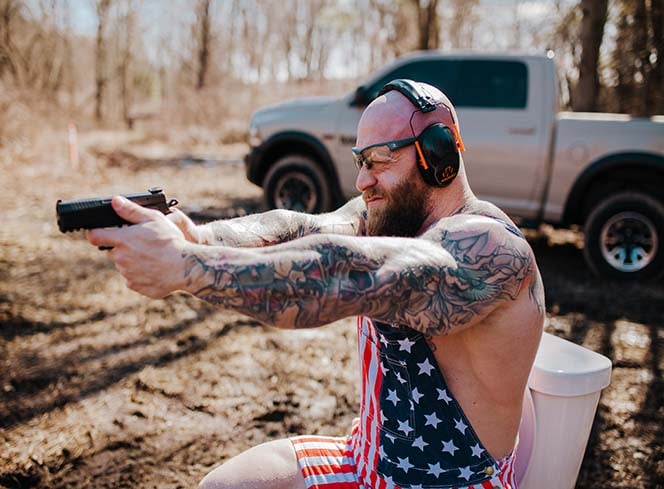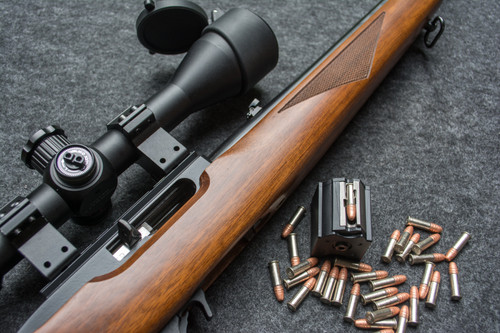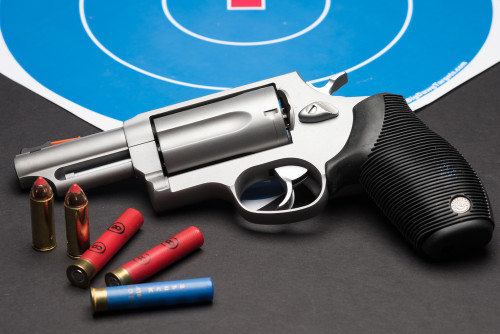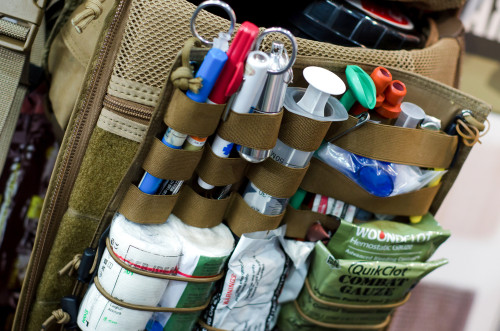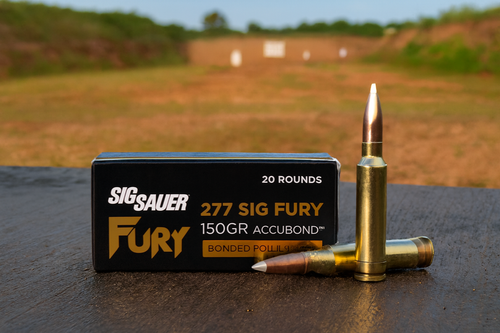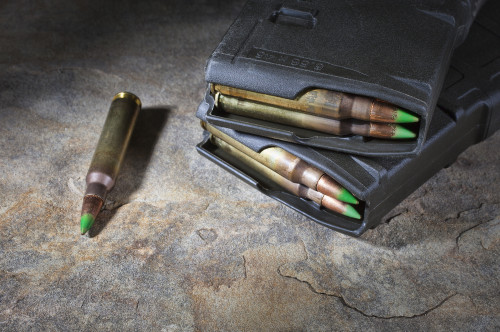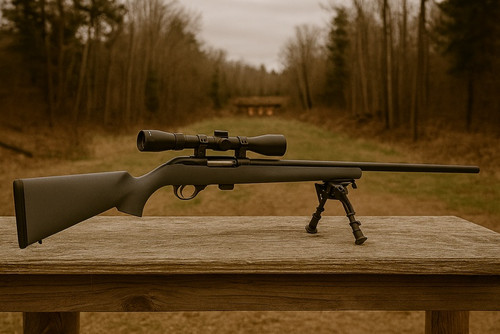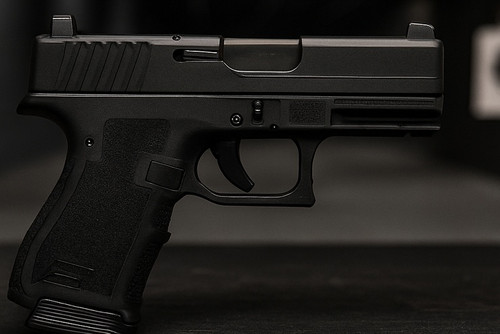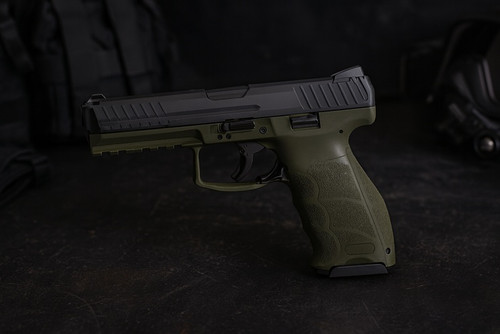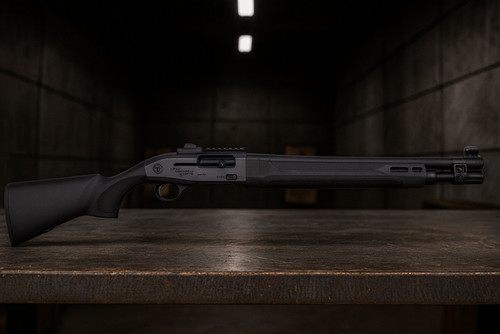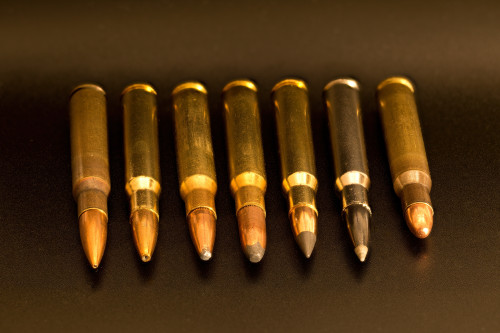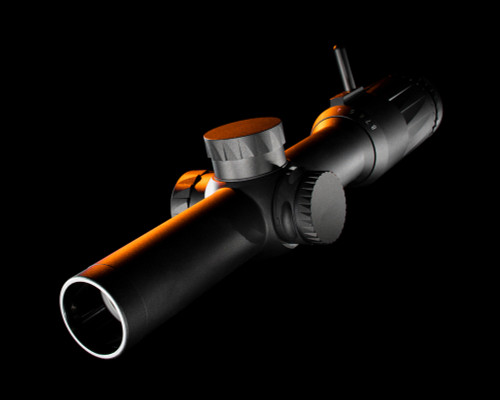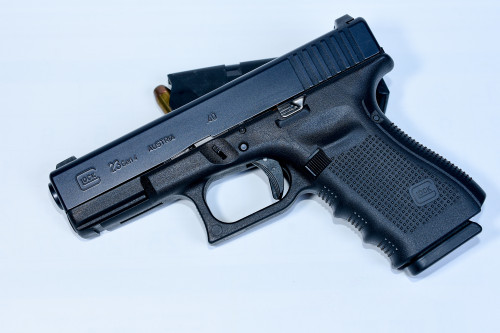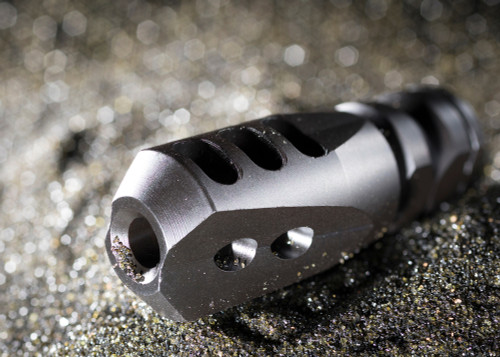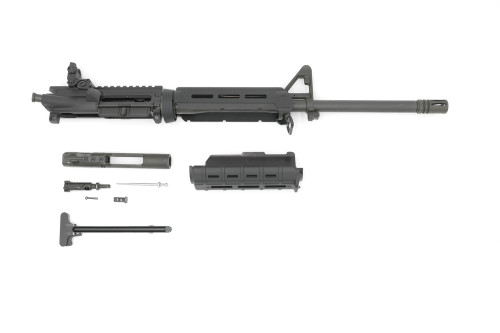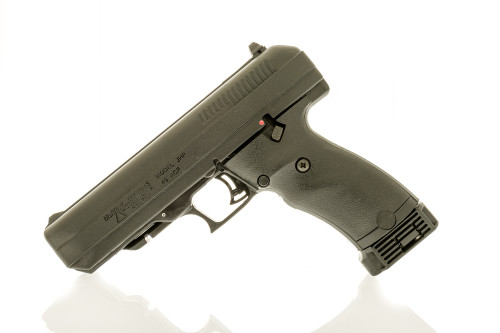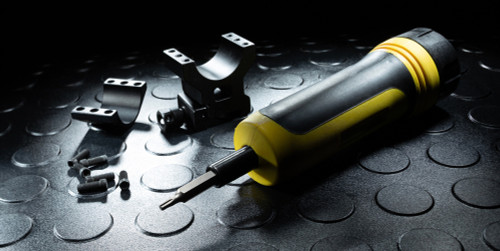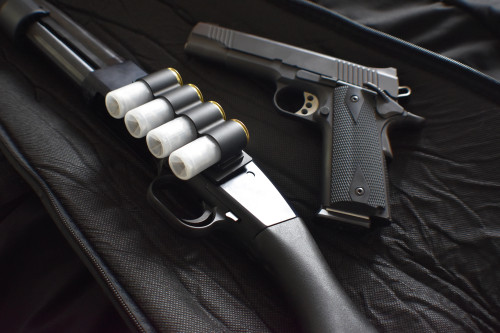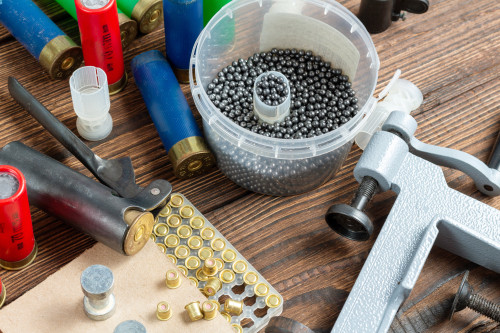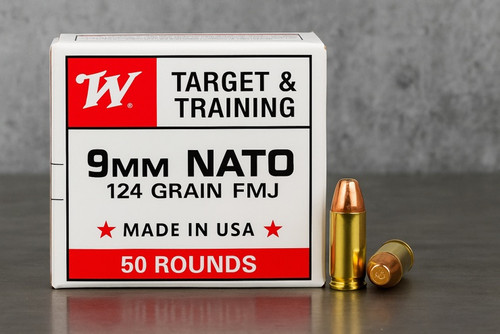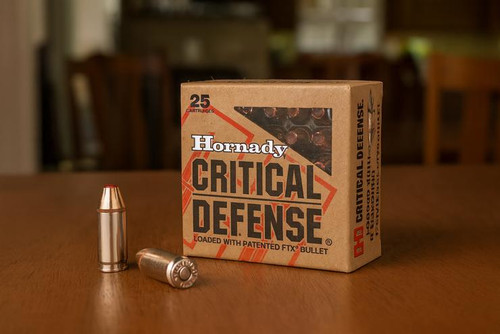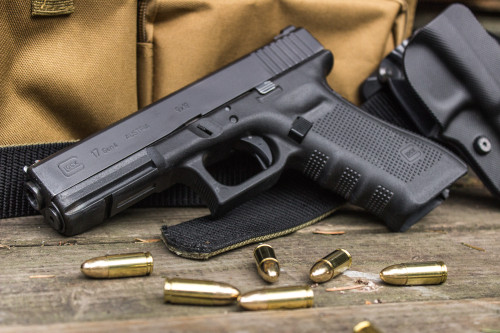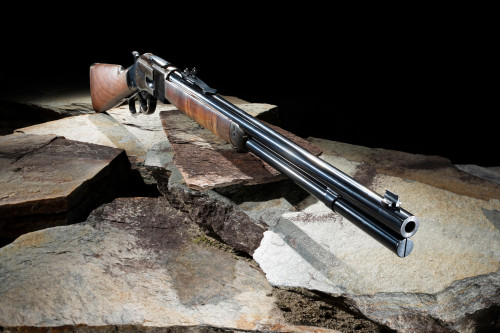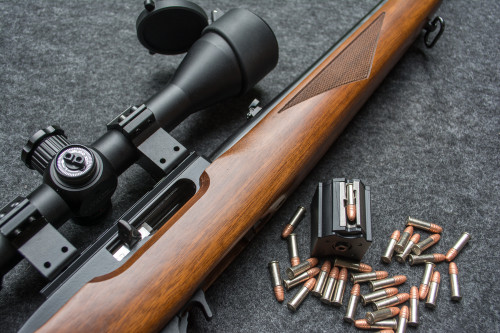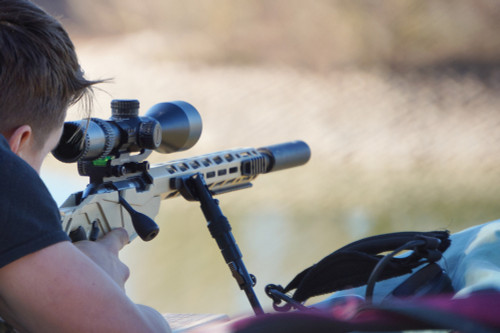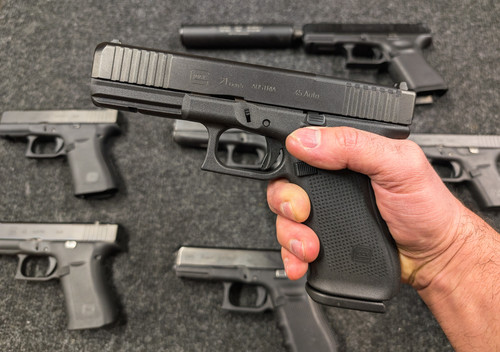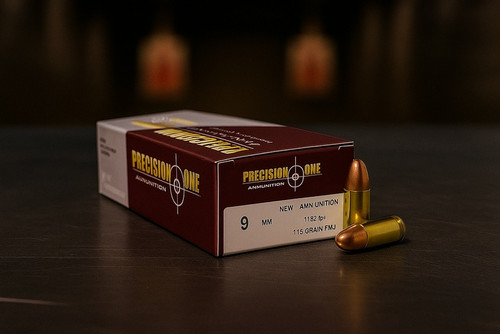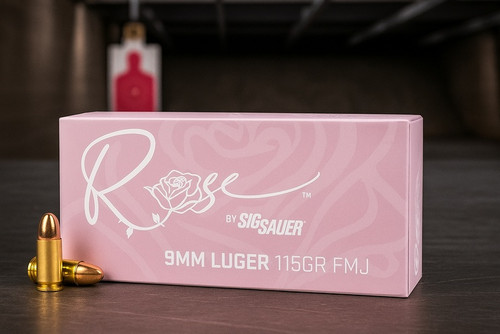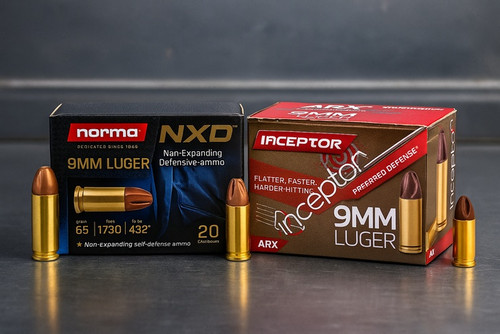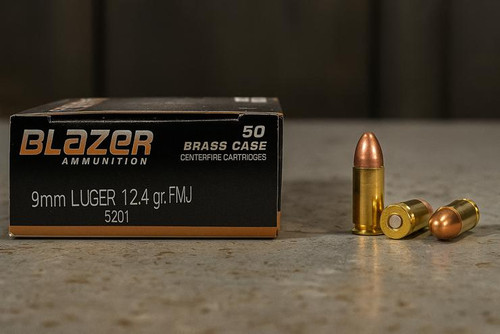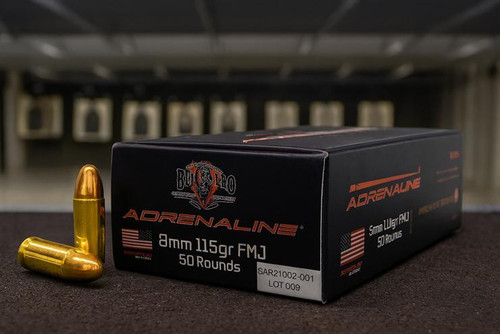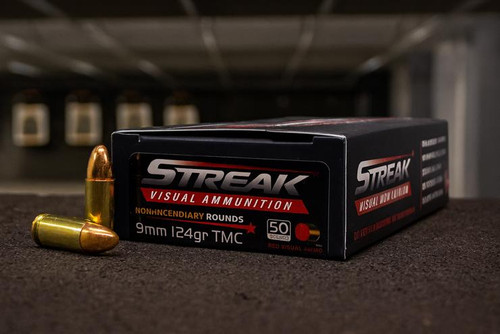Quick Answer
Both pistols are proven. The P365 XMacro Comp edges out for concealment, capacity (17+1), modularity, and value, while the Glock 19 still leads in long-term track record, and both are accurate carry pistols; any accuracy or recoil-recovery differences are small and shooter-/setup-dependent. Choose the Sig for maximum CCW potential in a thinner package; choose the Glock for proven durability, broad parts support, and a massive ecosystem.
Key Takeaways
- XMacro: slimmer, higher capacity, optics-ready, excellent concealment.
- Glock 19: legendary track record, vast aftermarket, superb support.
- With comps, Glock recoil recovery is slightly faster.
- Sig wins value; Glock wins history.
- Both run red dots; triggers feel different.
The battle between these two popular carry pistols continues to play out on forums and range days across the country. One represents the gold standard of the last three decades, the other embodies the newest innovations in capacity and compensator design—all in packages aimed at the same concealed carry niche.
Are We Comparing Apples to Apples? (Test Fairness & Setup)
You might wonder if comparing these two pistols makes sense. They're both compact 9mm handguns aimed at the concealed-carry market, but they come from different design philosophies.
For a fair comparison, both pistols should be presented in similar configurations. The XMacro Comp already has an integrated compensator, so adding a Radian Afterburner Compensator and Ramjet Barrel to the Glock 19 MOS creates a more balanced comparison. Both guns also run red-dot sights — a Romeo Zero Elite on the Sig and a Crimson Trace RAD on the Glock.
This comparison uses published specs plus aggregated user/third-party range reports under comparable setups. We did not conduct our own live-fire testing for this piece.
The goal? See which platform offers the most in categories that matter to everyday carriers: accuracy potential, comfort, capacity, concealability, and overall value.
Where we make subjective observations, those are drawn from Pro-Armory’s team experience accumulated during service in the military, competition shooting, work in gun shops, and detailed analysis of manufacturer specs, reviews, and community reporting online — not from live firing of every model.
Does each gun have fans who won't budge no matter what? Absolutely. But this head-to-head looks past brand loyalty to find objective strengths and weaknesses.
Reports commonly note the Sig prints less at appendix with similar holsters.
User and reviewer reports show solid reliability for both; the Glock’s longer service history remains the edge.
Specs & Dimensions at a Glance
Let's start with the raw numbers. These specs give us a baseline understanding of what we're comparing:
Compact 9mm Specs (G19 vs P365 XMacro Comp)
| Metric | Glock 19 (Gen 5 MOS) | Sig P365 XMacro Comp |
|---|---|---|
| Caliber | 9×19 | 9×19 |
| Capacity | 15+1 | 17+1 |
| Barrel | 4.02 in | 3.1 in (integral comp) |
| Length | 7.28 in (Gen5 MOS) | 6.6 in |
| Height | 5.0 in | 5.2 in |
| Width | 1.34 in overall (slide 1.0 in) | 1.1 in |
| Weight (empty mag) | 23.63 oz (optional: without mag 21.16 oz; loaded ~30.16 oz) | ≈22–22.8 oz (model-dependent) |
The Glock 19 has been a staple in the compact handgun market since 1988, with the Gen 5 being the latest evolution. According to Glock's official specs, it maintains the Safe Action® trigger system that helped make the platform famous.
Meanwhile, the Sig P365 XMacro Comp represents the newer approach to compact 9mm pistols. It packs impressive capacity into a slimmer frame. As Sig puts it, "MACRO means MORE" – more capacity, more shootability, and more concealability.
Capacity & Carry Footprint
Let's talk about that +2 capacity difference. The XMacro packs 17+1 rounds compared to the Glock's 15+1. That's two extra rounds in a gun that's actually thinner and shorter overall.
How much do those two extra rounds matter? For most civilian defensive scenarios, probably not much. But having more ammo without needing a magazine extension is always a plus. The XMacro achieves this through clever magazine design. It maintains a thin profile despite the increased capacity.
More important for everyday carry is the width difference. The XMacro is 0.16 inches thinner than the Glock 19. That may look small on paper, yet it feels real on the belt. Inside the waistband all day, the slimmer slide and frame ride easier. The thinner gun hugs closer to your body, so the bulge drops.
Height-wise, the Sig is slightly taller at 5.2 inches versus 5.0. The difference in grip length stays small for most hand sizes, so control stays steady. The real gain shows up in the full package. You get more rounds in a slimmer, shorter pistol, which is a strong combo for daily carry.
Feature Set Deep-Dive
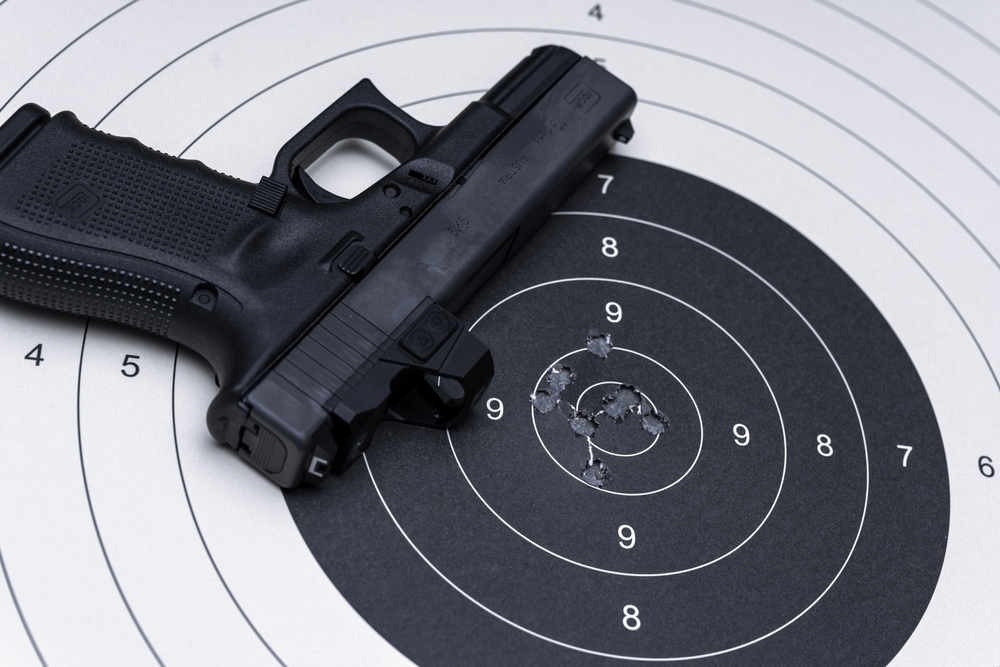
Optics Readiness & Sight Picture
Both pistols come optics-ready from the factory, but with different mounting systems.
The Glock 19 MOS (Modular Optic System) uses adapter plates for various optic footprints. This system works well but adds a bit of height to the mounted optic. The Gen 5 MOS models improved on earlier versions. It offers better compatibility with popular red dots.
Glock MOS uses adapter plates for different footprints; plate choice is slide/optic specific. Gen5 component changes don’t broadly prevent MOS use but confirm plate/optic compatibility for your slide.
The P365 XMacro Comp comes ready to accept SIG's proprietary optics directly, with the slide cut specifically for the ROMEO Zero Elite and similar footprint optics. The XMacro Comp is cut for the RMSc/ROMEOZero footprint (e.g., ROMEOZero Elite, ROMEO-X Compact) without plates.
Both systems allow for co-witnessing with iron sights, though the height of the co-witness varies based on optic choice and mounting solution.
Trigger Characteristics & Control
The triggers on these pistols feel noticeably different. The Glock uses its standard Safe Action® trigger with the familiar safety blade in the center. Many users find the Gen 5 trigger improved over earlier generations, with a cleaner break and reset.
The XMacro features a flat-faced trigger without a trigger safety blade. This creates a smooth, consistent surface across the entire trigger face. The trigger bow angles slightly forward, which some shooters find gives better leverage.
Trigger feel differs: Glock’s Safe Action tabbed shoe vs. Sig’s flat shoe geometry. Preference is highly subjective.. For new shooters, the difference comes down to preference rather than objective superiority.
Compensator Behavior & Muzzle Control
Here's where things get interesting. The XMacro Comp’s ported slide geometry precludes threaded/extended barrels on the Comp slide. (Standard XMacro slides are different.). According to True Precision, the XMacro Comp is "ideal for shooters wanting a ready-to-go, recoil-reducing carry pistol that they don't intend to modify."
The Glock 19 paired with the Radian Afterburner/Ramjet combo is an aftermarket solution that delivers excellent recoil control. The Glock setup is commonly reported to produce slightly faster recovery times between shots. This can allow quicker follow-up shots.
Both compensators reduce muzzle flip effectively, but the Glock's solution costs more as an add-on. The advantage is that you can swap it out or use the gun with a standard barrel when desired.
Ergonomics & Handling
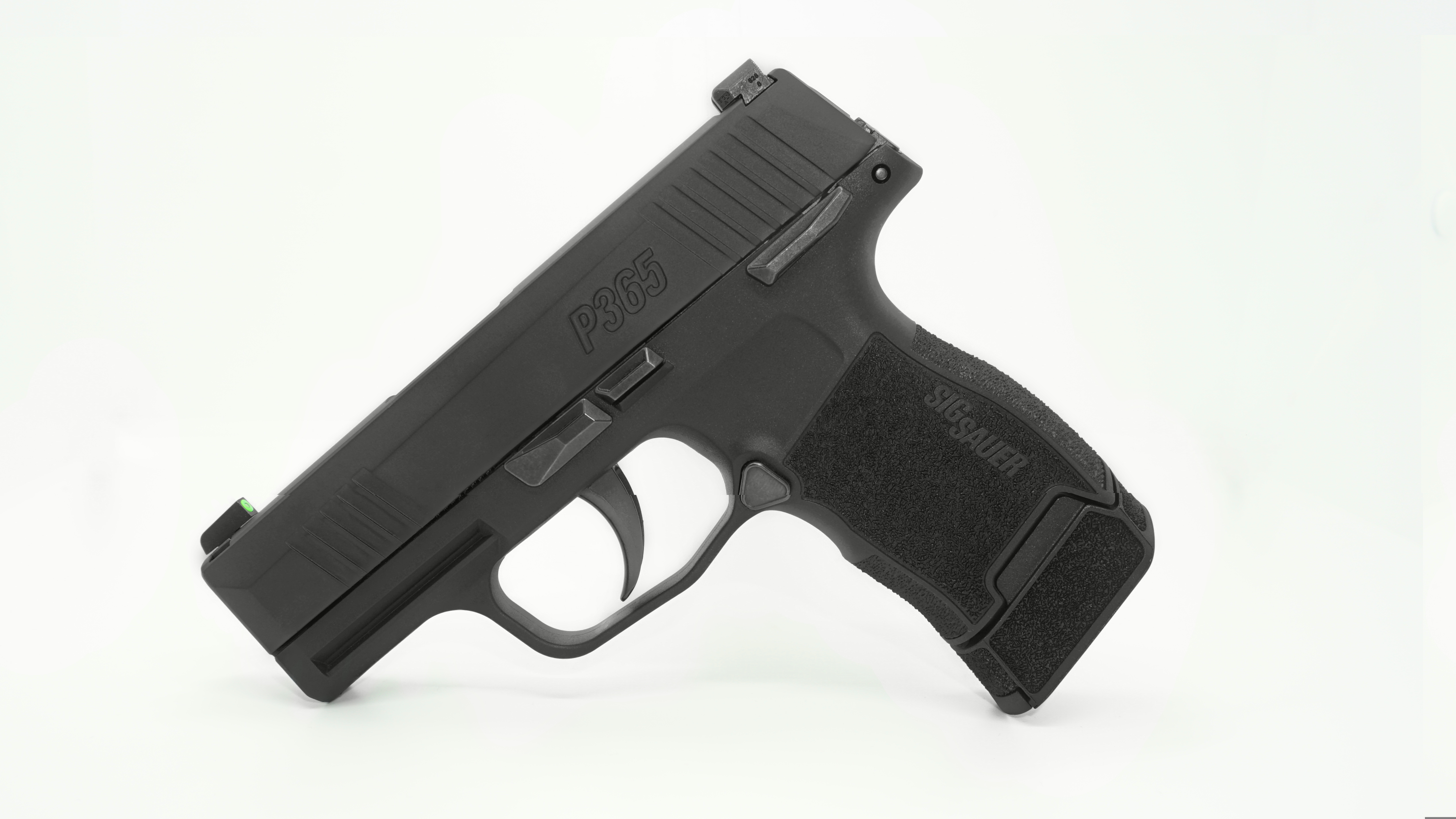
The Glock 19 has a somewhat boxy grip that measures 1.26 inches wide. For shooters with larger hands, this can be comfortable, but those with smaller hands might find it a bit thick. The Gen 5 models offer interchangeable backstraps to help tailor the grip to your hand size.
The XMacro has a more svelte grip at just 1.1 inches wide, but maintains a comfortable feel for most hand sizes. It includes interchangeable small, medium, and large backstraps. It gives it similar adaptability to the Glock.
Texture differences are subtle but important. Both guns offer good grip surfaces, though some users find the Sig's texture more aggressive and secure when hands get sweaty.
The beavertail on the XMacro tends to be more pronounced, which helps prevent slide bite for shooters with larger hands. The Glock can cause slide bites for some users without an extended backstrap.
As for reach-to-trigger, both guns place the trigger at a comfortable distance for most shooters. The Sig's forward-angled trigger bow can make the reach feel slightly different despite similar measurements.
Reliability & Track Record
This category heavily favors the Glock 19. It brings decades of proven performance across military, law enforcement, and civilian use around the globe. The core design has stayed steady since 1988, with each generation adding small refinements instead of big changes. That long, steady service record carries weight.
The P365 series is much newer, launching in 2018, with the XMacro variants appearing in 2022. As Wikipedia notes, "During 2022, SIG introduced a larger variant, branded as XMACRO, with a 17-round capacity."
That said, the P365 platform has quickly established itself as dependable, and the XMacro Comp shows similar promise. Both guns ran without issues in testing as per our report, but the Glock's longer history gives it an edge in the proven category.
For someone choosing a defensive handgun, Glock's track record provides additional peace of mind, though Sig's reputation for quality is also strong.
“Note: early-run P365s (2018) had documented teething issues that SIG addressed in subsequent revisions; later P365-series reliability has been solid in user rep
Accuracy & Drill Performance
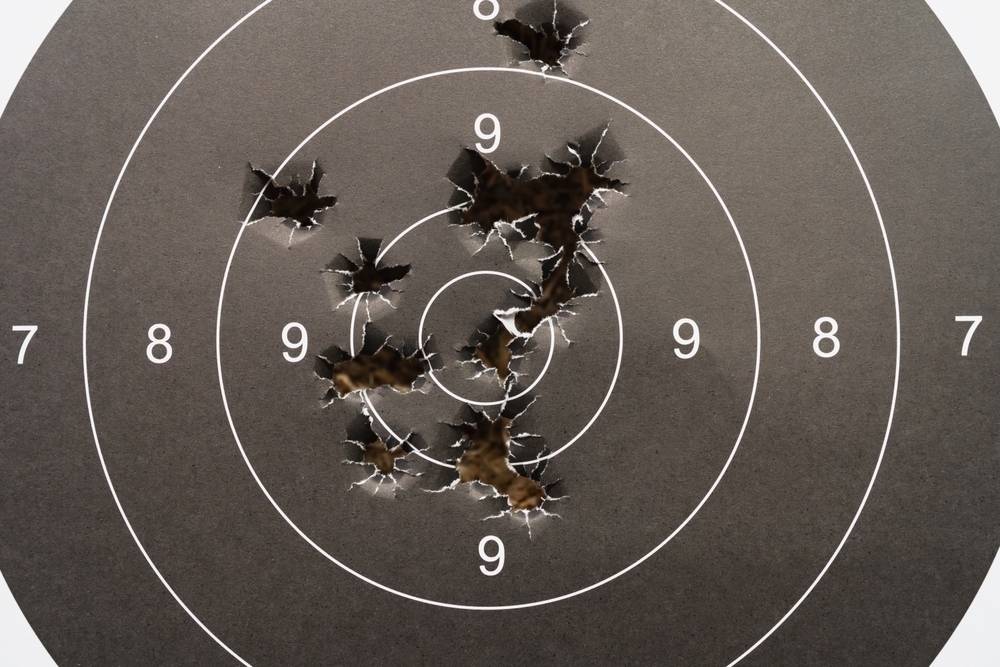
When it comes to putting shots on target, both pistols do well. At typical carry distances (3–10 yds), both produce near-identical group sizes for most shooters. With dots, practical differences shrink further. . That gap is small, but consistently reported across multiple independent sources.
This edge likely comes from the Glock’s longer barrel at 4.02 inches compared to 3.1, and the longer sight radius. A longer tube helps the bullet leave more stable. The extra sight length also gives a cleaner iron-sight picture. Together, those parts add up on the timer and on paper.
With red dots mounted, the difference becomes less pronounced, as the dot eliminates sight radius advantages. Still, the longer barrel of the Glock may contribute to slightly better mechanical accuracy.
For defensive shooting at typical engagement distances (3-10 yards), both pistols are more than accurate enough. The difference would only become apparent in precision shooting at longer ranges or in competition.
Modularity & Customization
The aftermarket for Glock pistols is enormous. Nearly every company that makes handgun accessories offers options for the Glock 19. From triggers to sights, barrels to compensators, the options seem endless.
Sig has taken a different approach by building modularity into their design from the start. The P365 system uses a Fire Control Unit (FCU) that can be transferred between different grip modules and slides. Sig's Custom Works offers factory customization options, including colors, triggers, and slides.
According to True Precision, the XMacro Comp has some limitations: it "cannot use threaded or extended barrels due to internal slide geometry" and is "only compatible with the standard 3.1" non-threaded barrel." This reduces some customization options compared to the standard XMacro.
The Glock ecosystem offers more third-party options overall, but Sig provides more factory customization choices. For someone looking to build a truly custom pistol, Glock has more paths available. For someone who wants factory-backed options without diving into aftermarket solutions, Sig has the edge.
Concealment Reality Check

For concealed carry, the XMacro Comp has a clear advantage. Its thinner profile (1.1 inches vs 1.26 inches) allows it to hug the body more closely, reducing printing through clothing.
Carried in the appendix spot with the same holster type, the Sig printed less during movement, bending, and sitting. The gap stood out most with light clothing or quick, dynamic moves. Less width and that slide profile help it melt in a bit better.
The Glock 19 still hides well—thousands carry it each day. You just need more care with clothing and holster choice. The extra width pushes the grip out from the body, which can show a larger bump. With the right wedge, belt, and cover garment, you can tame it.
Many carriers report that holster models tailored to the XMacro Comp further improve concealment compared to generic/light-bearing rigs.
Value & Total Cost of Ownership
The base price difference is significant. The Glock 19 MOS runs about $620, but adding the Radian Afterburner/Ramjet combo adds another $390. It brings the total to approximately $1,010. (Street pricing varies by region and over time.)
The Sig P365 XMacro Comp comes in at around $799 with the compensator already integrated. That's a $211 difference in favor of the Sig. (Street pricing varies by region and over time.)
Once you add optics, holsters, and spare magazines, the gap in cost gets smaller. Glock magazines are generally more available and often a bit cheaper; SIG factory mags are quality but typically cost more. The holster market for Glock is also broader, so you can find more budget-friendly fits and styles.
Even so, the up-front package favors the Sig. You get an integrated compensator setup from the start, with no extra parts to buy or tune. That lowers add-on spend and keeps the build simple out of the box.
For long-term ownership, the Glock may have an edge in parts availability and armorers who know the platform. Almost every gun shop in America has someone who can work on Glocks, and parts are readily available.
Final Call: Who Should Carry Which?
| Category | Glock 19 MOS (+ Radian comp) | SIG P365 XMacro Comp | Notes (from content) |
|---|---|---|---|
| Capacity | 15+1 | 17+1 (XMacro packs 17+1) | XMacro packs extra rounds vs Glock standard 15+1 |
| Width (Grip) | 1.26" | 1.1" | XMacro is ~0.16" thinner; rides easier IWB |
| Height | 5.0" | 5.2" | SIG slightly taller; control stays steady |
| Barrel length | 4.02" | 3.1" | Longer barrel / sight radius gives Glock a slight accuracy edge |
| Optics readiness | MOS uses adapter plates (Gen 5 plates not interchangeable) | Direct-mount for SIG footprint | SIG supports ROMEO Zero Elite / ROMEO-X COMPACT direct-mount; co-witness depends on setup |
| Compensator | Radian Afterburner / Ramjet add-on | Integrated slide compensator (non-removable) | Glock add-on costs more but is swappable; SIG cannot use threaded/extended barrels on XMacro Comp |
| Concealment | Hides well but wider — needs holster/clothing care | Thinner profile — prints less, hugs closer | For appendix carry the SIG prints less in movement |
| Accuracy (reports) | Slight edge; often under 1" at 7 yd | Often just over 1" | Red dots narrow gap; Glock length still helps |
| Modularity / customization | Vast aftermarket; broad parts support | FCU system; XMacro limited to 3.1" non-threaded barrel | True Precision notes no threaded/extended barrels for XMacro Comp |
| Track record | Decades proven (since 1988) | P365 line since 2018; XMacro 2022 | Glock leads in long-term history; SIG is dependable and promising |
| Approx. package price | $620 + $390 comp ≈ $1,010 | $799 (integrated comp) | SIG offers integrated comp value; accessories can narrow the overall cost gap |
After comparing these two excellent pistols across multiple categories, the Sig P365 XMacro Comp came out ahead in more areas. It offers better concealment, higher capacity, good ergonomics, and better value right out of the box.
Pick the Sig P365 XMacro Comp if you:
- Want maximum capacity in a slim package
- Prioritize concealment under lighter clothing
- Prefer a flat-faced trigger without a safety blade
- Want an integrated compensator without aftermarket work
- Value factory customization options
- Are working with a tighter budget
Pick the Glock 19 if you:
- Want decades of proven track record
- Need the broadest aftermarket support
- Plan to heavily customize your pistol
- Want slightly better mechanical accuracy
- Prefer the most widely used platform for training
- Value maximum parts availability
Both pistols represent excellent options in the compact 9mm category. Your personal preferences, hand size, carry style, and budget should guide your decision more than brand loyalty.
If you’d like to see a broader brand-level breakdown beyond just these two pistols, check out our head-to-head Glock vs Sig Sauer comparison.

Federal Premium 9mm 147gr JHP
$28.99
at Pro Armory
Prices accurate at time of writing
Frequently Asked Questions (FAQ)
Is the P365 XMacro Comp suitable for daily carry?
Yes, its slim profile and integrated compensator make it an excellent option for everyday concealed carry, with 17+1 capacity in a package that conceals well.
Does a compensator affect gun function with defensive ammo?
Both the Sig's integrated comp and the Glock's Radian system are designed to work with standard defensive ammunition. Always test your carry ammo for function.
Which has the better trigger for new shooters?
New shooters may prefer the Sig's flat-faced trigger with no safety blade. Others might feel safer with Glock's familiar trigger safety system. Both require training.
Will Glock 19 holsters work with the Afterburner comp?
Most standard G19 holsters won't accommodate the compensator. You'll need a holster designed for compensated Glocks or one with an open muzzle end.
Is 17+1 materially better than 15+1 for civilian carry?
For most defensive situations, 15+1 is plenty. The extra two rounds offer peace of mind but rarely make a difference in civilian encounters.
Which platform has cheaper, more available magazines?
Glock magazines tend to be more widely available and sometimes less expensive. Sig magazines are good quality but often cost more.
Can both mount popular red dots without gunsmith work?
Yes, both come optics-ready from the factory, though they use different mounting systems. The Glock uses adapter plates, and the Sig has direct mounting for compatible optics.
About the Author
This article was written by the ProArmory writing team based on current research, including studies from trusted sources like the Journal of Military Science, Firearms News, and the National Shooting Sports Foundation. We also used verified information from official defense publications and respected firearm authorities such as the ATF, NRA, and manufacturer manuals.
Disclaimer: The information in this article is for education only and is not legal advice. Laws on concealed carry vary by state and by city. Always check your local laws. Seek professional training before you choose any carry method.




 Pro Armory Editorial Team
Pro Armory Editorial Team